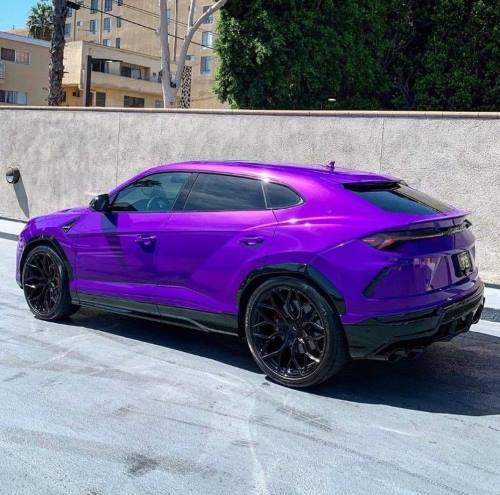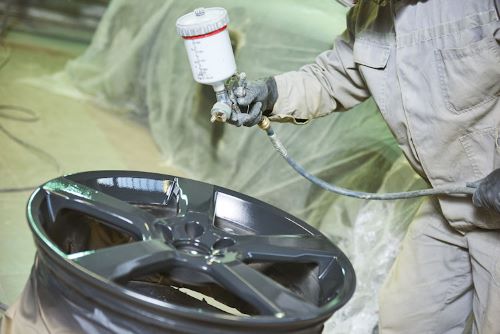 How should a paint be used ?
How should a paint be used ?
When talking about body painting, clearly paint application techniques are much more complex and complicated than decorative wall painting techniques, or even artistic painting techniques. Of course, in the latter case, there can be a depth in the mastery of mixtures and a much greater freedom in terms of interpretation and sensitivity.
In the practice of artistic personalization painting of bodywork, great creative freedom is also called upon, but above all this presupposes a perfect mastery of the basic techniques of spray painting and the use of the various products. .
The implementation of a paint consists of all the actions necessary to pass from the paint in the liquid state in the pot, to a paint in the state applied in a thin layer on the support.
The application of body paints requires a perfect knowledge of the characteristics of the products, their application and the possible reactions. The implementation is also a way of working that requires a lot of meticulousness and rigor, both in the preparation of the supports and in the application.
The application of automotive paints is done only by spraying, with a pneumatic paint gun or an airbrush. There are different products that apply in different ways, more or less easily. However, handling a gun requires practice and great precision in movement.
Correct application involves keeping the pneumatic gun at the right and even distance from the surface. Generally 10 to 15 cm, depending on the pressure and the shape of the spray pattern. If the gun is too close, then too much paint will be sprayed onto the surface and drips are possible. On the contrary, if the nozzle is too far, then the paint will not form a beautiful shiny film on the surface. In addition, there is a risk that the paint will dry in the open air, during the journey between the nozzle of the spray gun and the support, especially in hot weather. The angle of the gun in relation to the support is also important, as well as the speed of movement from left to right.
The implementation of your car, motorcycle, bicycle paint...
Theoretical information is contained in the technical sheet. Among the many descriptions and instructions, it is specified the mode of application, that is to say which tool to apply the paint : it can be a pneumatic gun or an airless gun, a brush, or a roller...
A certain number of coats to be applied may be specified, but more often, a dry or wet thickness is specified, or sometimes a weight to be applied per square meter.
When a technical sheet indicates that 100g per square meter should be applied, this is an indication of consumption and spraying to obtain the correct coverage but also the correct final dry film thickness. If you want to know the thickness applied, you must have a "thickness comb" which is a tool for measuring the wet layer. If you do not have this tool, the indication of application in grams per square meter is much simpler and more practical.
Note that after evaporation and drying of the product, we will obtain 100g multiplied by the solid content, in dry film thickness*.
The dry film designates the coat of paint applied and dried. In general, the thicknesses are between 20 microns and 60 microns in the automobile. For some industrial paints, you can go up to 150 microns. We differentiate the wet thickness from the dry thickness.
Consumption (yield in square meters per liter of paint) is one of the most important points in the implementation of a primer, paint or clearcoat. It is recommended to strictly follow the manufacturer's instructions. Some products do not obtain their optimum properties when they are applied too thickly, this is the case with certain adhesion primers. On the contrary, some products need a certain thickness to be able to ensure an optimal level of resistance, this is the case of automotive clearcoats.
The implementation of the paints implies a correct application, to obtain a perfect appearance, but also optimal properties. On the contrary, an incorrect implementation will give a poor general appearance of the paint (a failure !), with very varied possible defects, but also defects for the performance of the paint, for example in terms of holding, adhesion or coverage.
 General techniques for applying paints and lacquers
General techniques for applying paints and lacquers
To be successful with any painting project, a professional or individual should be thoroughly familiar with all technical details regarding painting and general paint and lacquer application techniques before they begin and in order to guard against the many pitfalls that punctuate the stages of bodywork painting. There are 1000 possibilities of making mistakes in the use and application of products on the many types of substrates and materials.
To avoid all these defects, reactions and other problems, it is important to study the recommendations for use in detail, and if you do not have a lot of experience in body painting, it is advisable to work with as much care and concentration as possible.
Although the basic spray application gestures are the same, the techniques of use depend on each product: you don't apply a base paint like you apply lacquer or clearocat.
Drying a painting and firing
The different automotive or industrial paints each have a different chemical formula and variable properties, which influence their method of application and also their drying method.
To understand the topic of paint drying and baking, you need to know the two main types of chemical formula of paint to be painted with a spray gun : first there are paints that dry by evaporation and then , paints that dry and harden by polymerization.
For these two types of paint, drying is possible naturally with a temperate temperature, preferably between 15 and 25 degrees Celsius. This is called room temperature drying or “air” drying.
Most paints can be put in an oven or baked, in order to speed up their drying time. For professionals in the field of painting, it is often preferable to force drying with baking, in order to free up workspaces and be able to deliver to the customer more quickly.
How to cover and varnish a painting?
This is a technical theme that often comes up in discussions between applicators and technical support for the application of paints. The question of How to cover and varnish a painting? is particularly important and crucial, because if it is not understood and respected, it can cause problems with the behavior and cohesion of dry paints.
It is mainly the risks of detachment and resistance over time that will appear when the "covering" intervals are not respected. Indeed, most paints, when they are dry, no longer allow them to constitute a support on which one can adhere.
To cover a paint with a varnish or a paint with another paint, they must be superimposed one on the other after sanding, or just after an application, before the total evaporation of the solvents. There is also a minimum time interval to respect before covering, just as there is a maximum time interval not to exceed.
Technical specificities applied
Some products applicable in industry or bodywork have applied technical specificities, which it is important to be aware of before starting the application. This is particularly true in the field of special effect paints, with for example chameleon paints which need to be applied in very thin layers, or even chrome paint which requires a very particular spray application.
When you don't take the time to learn about the specific application method of a paint, for example a chameleon, then you apply the paint your way and the results are often very disappointing. It is only afterwards, when one seeks to understand the causes of the defect, that one understands that the application was badly made.
In the list of many application defects, there is for example a "fish effect" which is the appearance of a whitish veil on the surface of a pearl or chameleon paint applied. This is the result of applying too thick a layer. Here is a good example of technical application specifics.
Theoretical knowledge of painting techniques
Preparatory work for car, motorcycle, bicycle painting...



















































































